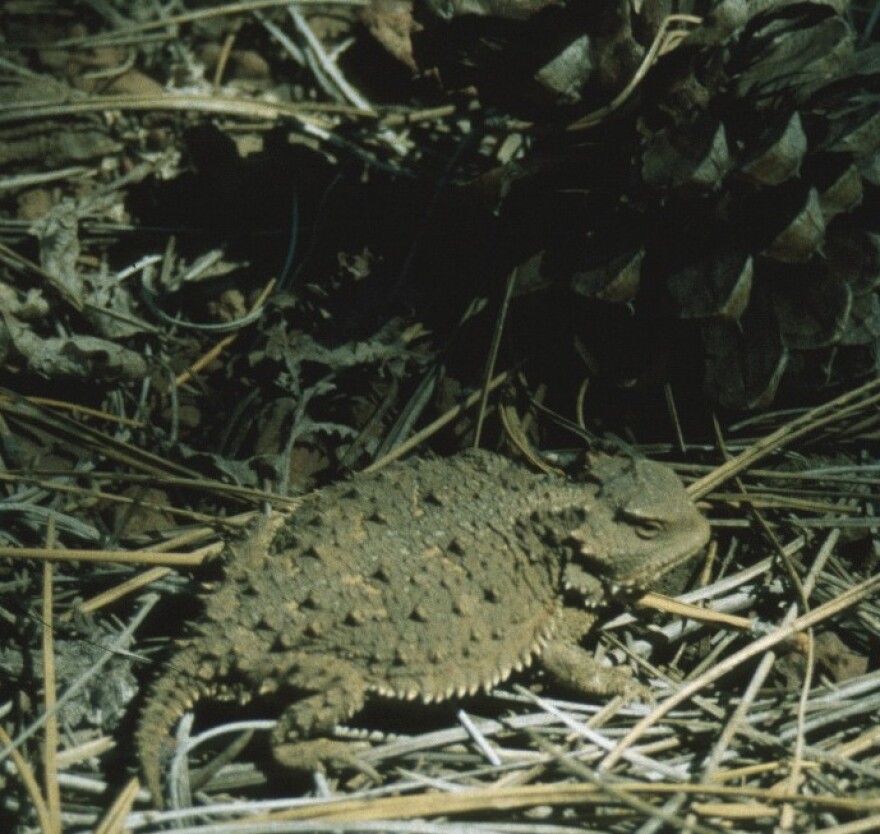With spikes rimming its head and spines flanking its body, the horned lizard of the West could be a fearsome sight, a sort of modern-day dinosaur. That is, if it were any larger than a human hand.
Sometimes called “horny toad” or “hamburger lizard” for its flattened, rounded body shape, this iguanid reptile has fascinated humans for ages. It graces the geometric designs on Mimbres pottery and animates Native American stories. People covet them as pets.
Most species of horned lizards eat a specialized diet of ants, snatched up with a sticky tongue that is unaffected by ant venom. Some live at elevations as high as 11,000 feet, despite being cold-blooded.
That’s thanks to some unusual adaptations: horned lizards can stay active in a wider range of temperatures than other lizards. Those that live at high elevations birth live young, keeping their eggs warm internally until after hatching.
Horned lizards rely on camouflage, a spiny shield, and the ability to puff up like a balloon as protection from predators. But some have an especially bizarre defense: squirting a well-aimed stream of noxious-tasting blood into the mouths of prying foxes and coyotes.
They do that by constricting veins in the head. That causes blood pressure to build up inside sinus cavities surrounding the eye, tearing the thin-walled membranes and projecting the lizard’s bloody weapon.
The Colorado Plateau hosts one of the most widespread species, the greater short-horned lizard. Look for these western icons in forests, grasslands, even in some urban neighborhoods.







